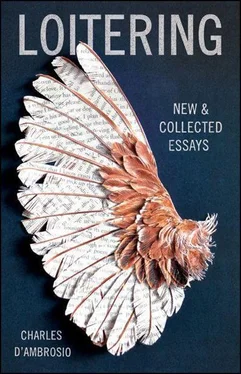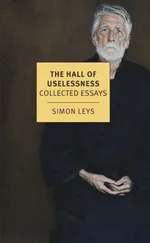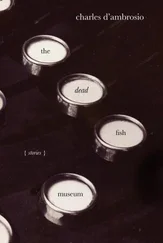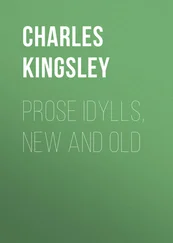The most interesting structures at Biosquat are built with an armature of bike rims sheathed with corrugated plastic. The rims are fastened together with tie wire and arch nicely toward the sky, propped up from below by lengths of bent rebar or the trunks of scavenged trees. The chrome spokes make for exactly the kind of airiness Santos seeks elsewhere through elevated language; their thinness gives an otherwise stout ceiling a delicate appearance and, clad with the corrugated plastic, which is predominantly white, the rims and spokes together look, overhead, like a drove of gauzy parasols. The curving shape and the texture of the skin remind you of Gehry, as does the collagist sensibility and the use Santos makes of cheap-tech materials. At this point in their construction, somewhat unfinished, you feel like calling these ingenious, junky, Quonset-like things “pieces”—as you would a piece of sculpture. It’s one of the paradoxes I found most intriguing about Santos: that he’s a commissioned sculptor, working in an art form bound to materials and materiality while putting such a heavy, personal accent on ideas of ascent and the ethereal. This isn’t an ambition foreign to sculpture, for sure, and even straight verisimilitude is an attempt to lift life out of stone, transcending a basic, obdurate fact about the physical stuff. So the pieces are unfinished — although given their resemblance to collage and their use of trash they may always resist looking finished — and in their present condition they encapsulate the cosmology of Santos’s project as a whole. There’s the empyreal ceiling above, shaped like a parachute, and then, below, Santos is building rude walls from red clay that he digs out of the ground; in between, the walls will be reinforced using, of course, bike frames — a sort of colorful bike rebar that, at this point, remains exposed, so that the bikes emerge from the clay and sit at a sort of midpoint between earth and sky.
Flight is a leitmotif for Santos, and the theme reaches richly into all the word’s meanings, from flying to fleeing to the exuberances of fancy and transcendence to joyrides and quests. “You need that metaphoric inspiration to get a focus,” he says. And so when he talks of nomadism the idea veers from roving bikes to migratory birds and eventually melds into “a dream of autonomous migration in self-sufficient skybikes with ultralight amenities. It is a soaring of light spirits — dematerialized, floating, ethereal, intense.” A skybike probably should not “dematerialize,” not in flight, anyway, but it’s the turning of this kind of trope that marks for me the line between belief and disbelief, between accepting the visionary and balking at the vision. The movement from skybikes as an engineering feat to light spirits as a condition of the soul is purely metaphoric. It owes more to the Book of Revelation than it does to physics, more to the ecstatic tradition in poetry than it does to aeronautics. Looking around Biosquat, at the tangle of bikes or the hardscrabble soil, the effort of translating stubborn matter into an immaterial vision is evident. It’s slow going. And while the freedom described here is a spiritual event — an apotheosis — it’s also an escape from the poverty of the corporeal world, a gripe you always hear from lyric poets, saints, and visionaries.
This is tricky terrain, the transition from the airy intensity of the imagination to the denser inspissations of reality. In his writings on the web Santos so often leaves sense for sound, so often eases away from the meaning of a word for the music it will make and abandons practicality for the pleasing image, that his real project seems to be about the liberation of language, about words loosed from their context, about poetry. (In a passage I really like, he writes that the pilots of these skybikes “use dust devils as the lift of last resort. You kamikaze into them, treetop high, and hope to rise enough to catch a big convection cell. too big, you dement into a winged blue Popsicle.”) In this context Santos reminds me of the French utopian Charles Fourier, and both men are closer to the furor poeticus of Plato than they are to a hard-minded historian like Marx or a more sober utopian like Robert Owen. Fourier believed the world would eventually contain thirty-seven million poets equal to Homer, thirty-seven million mathematicians equal to Newton, and thirty-seven million dramatists equal to Molière — although, he admitted, these were only “approximate estimates.” He believed there were 810 psychological types and organized his phalanstères to include two of each. He believed in nearly complete sexual liberation — sadism, masochism, sodomy, homosexuality, pederasty, bestiality, fetishism, and sex between close relatives — and he also believed that salt would one day leech from the seas and that those seas would in turn become oceans of lemonade.
Some of what Santos is up to might be called Art Brut, although in its American form, as Outsider Art, its appreciation contains a quotient of irony and class snobbery or condescension that has always bothered me. Plus, Santos doesn’t strictly qualify — too much training, as a sculptor and muralist, and too much savvy, too much awareness of his renegade role in relation to the gallery world. He’s something of a pisser, resistant to art rather than naïvely unaware of its trends, so perhaps the uppercase label that suits him best is Marginal Art. At any rate, Biosquat has some of the Art Brut stuff — its materials are humble, it’s the work of a solitary devoted soul, it’s eccentric and enigmatic, it’s being undertaken in near total disregard of public opinion — and one day it may resemble the Watts Towers or the Palais Idéal. Biosquat is packed with thought, text-like, and its themes — cycling, nomadism, trash worship, solar power — touch everything from the fences to the toilets. The toilet I used, for instance, is your traditional white porcelain seat mounted on a trike, and when you’re done, you toss in some mulch (not lime, which, Santos says, just turns the waste into a bunch of brick turds), and then periodically the whole contraption is inched forward, leaving in its trail a swath of fertilizer suitable for gardening. In a couple places around the property there were also pissoirs fashioned out of plastic Clorox bottles, from which the bottoms had been snipped, and black hoses that then ran into beds of wood chips, the exact agro-purpose of which escaped me, but had something to do, I imagine, with urine’s nitrogen content. The emunctory enthusiasms of people in eco-villages, always fiddling with their waste, might make for an interesting study, but meanwhile the tricycle toilet at Biosquat worked wonderfully. It didn’t stink at all, a claim I’d seriously doubted when Dave Santos first mentioned it, and crapping alfresco is always nice.
One of the laws of Biosquat, it seemed, was that nothing could be what it was originally. The gnat goggles were made from the screens of a tea infuser; to the fat ends of a set of chopsticks Santos had fixed, on one, a tablespoon, and on the other, a toothbrush. He called this general category of transformation “mutant technology.” Some of these transformations — especially the bikes — are right in the grain of a particular brand of American genius that flourished in the years following World War II. This genius centered around car culture, and the era probably reached its meridian in Southern California, in the fifties and sixties, waning somewhat by the 1970s. Dave Santos isn’t all that different in spirit from a SoCal gearhead like Ed “Big Daddy” Roth, automotive designer and visionary, creator of Rat Fink, who pioneered the use of fiberglass in car bodies and was a guru/hero to the legions of boys who built scale models of his hot rods — the Outlaw, the Beatnik Bandit, the Mysterion — and any shade-tree mechanic who had an aesthetic bone aching in his body. Roth was celebrated in Tom Wolfe’s seminal early essay “The Kandy-Kolored Tangerine-Flake Streamline Baby,” and even today his legacy of transformed, souped-up, mutant machines hasn’t entirely gone away. The idea of an utterly reworked kick-ass car is still amply evident among the Hispanic boys who cruise Hollywood Boulevard on Friday nights, although in the main that lexicon has gone out of the life of white kids (those who don’t live in Barstow or Bakersfield or Stockton, anyway).
Читать дальше












